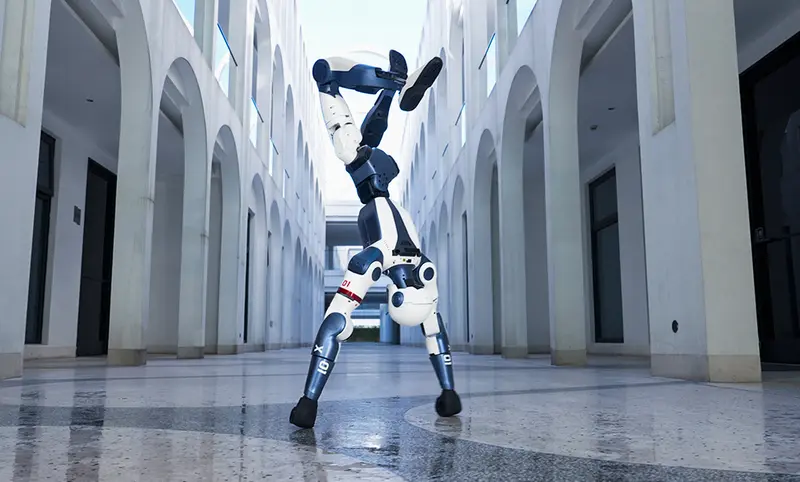- Published on
Unitree R1 and Figure 03 Named to TIME's Best Inventions of 2025, Highlighting Humanoid Momentum

In a significant acknowledgment of the rapid advancements in bipedal robotics, TIME Magazine has featured two humanoid robots—the Unitree R1 and the Figure 03—in its influential list of the Best Inventions of 2025. The inclusion of two distinct machines highlights the dual trends shaping the industry: the push for mass accessibility in research and the ambitious, high-stakes race to develop a commercially viable general-purpose robot.
This mainstream recognition underscores a pivotal moment for a field long confined to research labs and science fiction. As we tweeted earlier, the two selections represent different but equally important frontiers for the technology. The Unitree R1 is set to "democratize humanoid robotics even further," while the Figure 03 is "taking first steps toward robots that actually live and work in our homes."
Humanoids earned rare recognition in TIME’s Best Inventions of 2025: 🦿 Unitree R1 – following the success of the G1, it’s set to democratize humanoid robotics even further once available. 🏠 Figure 03 – taking first steps toward robots that actually live and work in our homes.
For the past 25 years, TIME editors have compiled an annual list of the most innovative inventions. From the world’s biggest roller coaster to a humanoid robot that loads the dishwasher, see what made the 2025 list here: time.com/collections/be…
Unitree R1: Lowering the Barrier to Entry
TIME recognized the Unitree R1 for its potential to radically democratize access to advanced robotics. With a starting price of just $5,900, the R1 is poised to become an essential tool for researchers, educators, and developers. The magazine praised its combination of affordability and capability, noting its 26 joints, 55-pound frame, and built-in AI for voice and image processing that enables complex movements like running and even cartwheeling.
The R1 represents the next logical step in Unitree’s aggressive strategy of scaling production to lower costs, a playbook that has already proven successful with its predecessor, the G1. As we reported recently, the G1 has become a critical platform for groundbreaking AI research and has even appeared for sale on Walmart's website, signaling a shift toward mainstream commercial channels.
By making the R1 even more affordable, Unitree is betting that a larger and more diverse community of developers will accelerate the creation of useful skills and applications for humanoid platforms.
Figure 03: The Ambitious Push into Our World
Sharing the spotlight is the Figure 03, a robot designed with the home and workplace in mind. Its inclusion on TIME's list acknowledges the immense ambition and rapid progress Figure has made in pursuing a general-purpose humanoid.
However, this recognition comes just as a separate TIME Magazine cover story provided a more grounded look at the gap between Figure's polished demos and its current capabilities. That report detailed the significant data, safety, and reliability hurdles that remain before a robot like the Figure 03 can be trusted to operate autonomously in unstructured human environments.
The dual accolades from the same publication capture the current state of the industry perfectly: the potential is undeniable and worthy of celebration, but the path to realizing that potential is fraught with profound technical and societal challenges.
A Maturing Field
The selection of not one, but two humanoids for TIME's list is a powerful indicator that the technology is maturing beyond niche academic interest. It reflects a growing consensus that bipedal, human-like robots may be a key component in the future of automation. The recognition of both Unitree's accessible model and Figure's high-end consumer ambition shows that the ecosystem is developing on multiple fronts, fostering both foundational research and bold commercial ventures.
Your Personal AI Health Coach
Upgrade your wellness routine with the **Samsung Galaxy Watch 8**. This 2025 model features a whisper-light cushion design and Galaxy AI that delivers a daily Energy Score based on your sleep and heart rate. Whether you need a real-time Running Coach or insights into your stress via Vascular Load monitoring, this is the proactive assistant you’ve been waiting for.
As an Amazon Associate, we earn from qualifying purchases at no additional cost to you.
Share this article
Stay Ahead in Humanoid Robotics
Get the latest developments, breakthroughs, and insights in humanoid robotics — delivered straight to your inbox.

